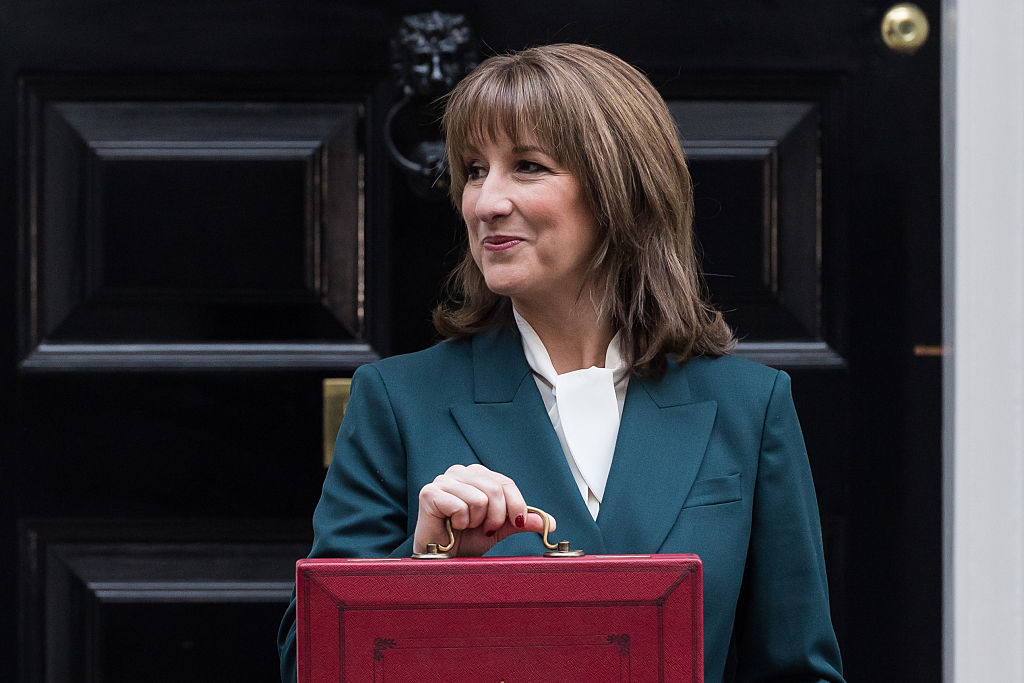State pension could rise by 4.8% next year – triggering pensioner tax for first time
Frozen income tax thresholds are on a collision course with the state pension increases, dragging more pensioners into paying tax


The full new state pension looks set to increase by more than expected in April 2026, ushering in a new era where pensioners relying solely on the state pension will pay income tax for the first time.
The significant increase expected from April is due to a bumper rise in earnings. Average wage growth (including bonuses) in the three months to July 2025 had been thought to have risen by 4.7%, data published last month showed. But today’s employment figure saw the average earnings growth for May to July revised up to 4.8%. The July earnings figure, published in September, is usually used as the earnings part of the triple lock.
On the basis of this new earnings figure, this would take the full new state pension to around £12,590 next April for 2026/27 – and for the first time rise above the income tax personal allowance £12,570. This means, for the first time, anyone relying solely on the full new state pension in retirement will have to pay income tax.
MoneyWeek
Subscribe to MoneyWeek today and get your first six magazine issues absolutely FREE

Sign up to Money Morning
Don't miss the latest investment and personal finances news, market analysis, plus money-saving tips with our free twice-daily newsletter
Don't miss the latest investment and personal finances news, market analysis, plus money-saving tips with our free twice-daily newsletter
The Department for Work and Pensions calculates the state pension increase by applying the uprating to the weekly total, converting to a day rate and then multiplying by 365.25.
The latest prices data, out in September, which showed inflation held at 3.8% in August, also suggested pensioners are likely to receive another inflation-beating boost to their annual state pension payment.
David Brooks, head of policy at independent consultancy Broadstone, said: “For the first time ever, it looks likely that the state pension will exceed the personal allowance meaning those in receipt of the full new state pension will be taxed on that income.
“It is bad news for the chancellor who will have to fund the increased cost of providing this benefit to pensioners next year. With the state pension age review ongoing, it is a timely reminder of the accelerating cost of the triple lock and that amendments appear inevitable looking to the future.
“In the short-term, budgetary pressures remain tight and so, as we head towards winter, the news will be positive for those pensioners who rely on the state pension to provide the majority of their income.”
With the triple lock formula guaranteeing an increase of at least 2.5% every year, the headline rate of the new state pension is certain to exceed the current income tax threshold even further by the 2027/28 tax year.
An April 2026 increase of 4.8%, followed by a further increase of (at least) 2.5%, would take the full new state pension to more than £12,850 in April 2027 – above the expected level of the threshold where income tax becomes due.
Jon Greer, head of retirement policy at Quilter, said the cost of the triple lock is in the spotlight, “appearing increasingly out of step in the medium to long-term”.
He added: “The formula, whichever is highest of earnings growth, inflation, or 2.5%, was introduced to protect pensioners during periods of low growth and to address the state pension’s relative decline in value that had occurred in previous decades. But today, it acts as a rigid mechanism that drives up spending regardless of affordability or fairness.”
A more sustainable alternative would be a smoothed earnings link that would base annual increases on a rolling average of wage growth over three years, said Greer.
“This would reduce volatility and better align pension increases with long-term economic trends,” he said.
Alongside this, in periods where inflation is relatively high, the state pension could increase in line with prices until real earnings recover, at which point it could then revert back to its average wage growth, Greer suggested.
“Effectively, this would maintain the state pension to a benchmark proportion of average earnings. This approach offers a fairer and more predictable framework. It supports pensioners while recognising the pressures on working-age taxpayers and the need for fiscal discipline,” he said.
“Today’s figures offer short-term reassurance, but they also reinforce the case for reform. The triple lock has done its job. Now it is time to replace it with a system that is fairer, offers more certainty, and fit for the future.”
What is the triple lock?
The ’triple lock’ rule means the state pension will rise by the highest of:
- The growth in average earnings (including bonuses) in the three months to July – this figure is 4.8%.
- The growth in CPI inflation in the year to September;
- A floor of 2.5%, which will not be relevant this year.
Inflation in the year to August held at 3.8%, official figures published in September showed, in line with July, which was also 3.8%. The September figure which feeds into the triple lock will be published in mid October. If inflation continues to rise this could exceed the earnings growth figure, though the Bank of England recently estimated CPI would not go above 4% this year.
Will the triple lock be scrapped?
The government has repeatedly committed to the triple lock for the remainder of this Parliament.
But an increase of 4.8% in the headline rate of the pension is actually be slightly more than the 4.6% assumed by the Office for Budget Responsibility (OBR) in its March 2025 ‘Economic and Fiscal Outlook’, which fed into its assessment of the state of the public finances at the time.
David Brooks, head of policy at independent financial services consultancy Broadstone, said: “The good news for millions of pensioners is that they will receive hundreds of pounds more income every year at a time when many still face persistent cost-of-living pressures and depend heavily on the state pension as their main income.
“At a time of strained public finances, however, the rising cost of funding this benefit will once more come under scrutiny especially given the ongoing State Pension Age Review.
“Debate over the future of the triple lock itself, means-testing or alternative funding, such as via the introduction of a national insurance contribution of some kind, is likely to intensify.”
“The debate should be around whether the increase is dictated by an earnings link or an inflation link should be a priority,” Brooks added.
Revived Pension Commission
In July, the government revived the Pensions Commission as part of a long-term plan to address the pension under-saving crisis of those due to retire in the mid-century. As part of this, the Commission will look at the relative success of automatic enrolment, contribution rates among employers and workers and solutions for the self-employed.
But the Commission also promises to look at the balance between all types of pensions.
Rachel Vahey, head of public policy at AJ Bell, said: “That could mean a review of the state pension as well, at the same time as the government launches its formal review of the state pension age.”
The state pension age will gradually increase to age 67 between 2026 and 2028. It’s also due to rise to 68 in the mid-2040s.
“It’s entirely possible – if not likely – this latest state pension age review will advocate bringing forward that increase to the late 2030s to save future governments’ money,” said Vahey.
“As the state pension grows ever closer to the frozen personal allowance threshold it could be that the government is finally forced to address the question of how much the state pension should really offer, at what age, and how it can increase payments sustainably each year,” she added.
Get the latest financial news, insights and expert analysis from our award-winning MoneyWeek team, to help you understand what really matters when it comes to your finances.
Laura Miller is an experienced financial and business journalist. Formerly on staff at the Daily Telegraph, her freelance work now appears in the money pages of all the national newspapers. She endeavours to make money issues easy to understand for everyone, and to do justice to the people who regularly trust her to tell their stories. She lives by the sea in Aberystwyth. You can find her tweeting @thatlaurawrites
-
 London claims victory in the Brexit wars
London claims victory in the Brexit warsOpinion JPMorgan Chase's decision to build a new headquarters in London is a huge vote of confidence and a sign that the City will remain Europe's key financial hub
-
 Rachel Reeves's Autumn Budget: What it means for the UK
Rachel Reeves's Autumn Budget: What it means for the UKOpinion A directionless and floundering government has ducked the hard choices at the Autumn Budget, says Simon Wilson
